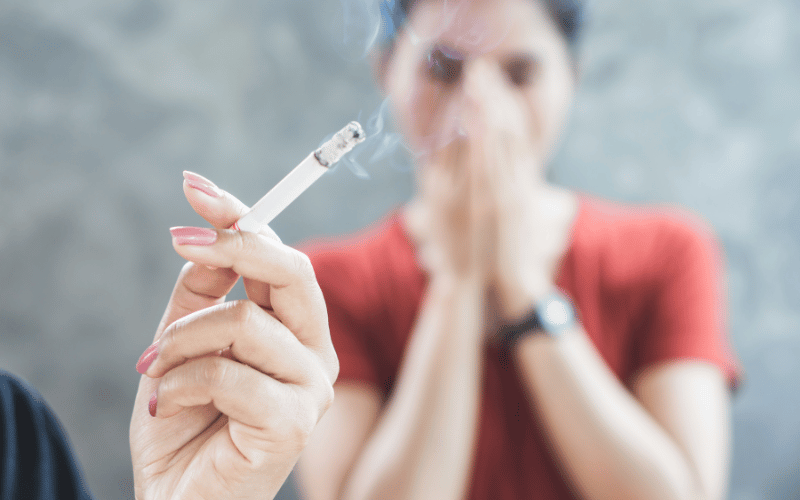Fact 2: The Unseen Danger of Secondhand Smoke

While smokers make a conscious decision to inhale, many non-smokers are exposed involuntarily to the perils of secondhand smoke. This isn’t merely an annoyance or a fleeting discomfort. This is about being subjected to a mixture of dangerous chemicals without one’s consent, a scenario that’s unfortunately too common.
Often dismissed as harmless, secondhand smoke is anything but. Non-smokers who find themselves engulfed in it are inhaling many of the same toxins and carcinogens as the active smoker. These aren’t just momentary intrusions. Over time, they accumulate, and the health risks they pose magnify.
The ramifications of secondhand smoke are most pronounced in children. With developing respiratory systems and less robust immune defenses, they are especially susceptible. From respiratory infections to sudden infant death syndrome (SIDS), the threats are many, making them the silent victims of another’s choice.
Secondhand smoke isn’t just an individual’s problem; it’s a societal concern. When someone lights up in a public space, it’s not just their health they’re compromising. The entire vicinity becomes a danger zone. Creating stringent smoking regulations, advocating for smoke-free zones, and raising awareness are vital steps in safeguarding public health.
For those regularly exposed to secondhand smoke, it’s essential to recognize the associated risks. It’s not about causing alarm but about staying informed. Taking measures to limit exposure, advocating for smoke-free environments, and understanding the importance of clean air are steps in the right direction. (2)